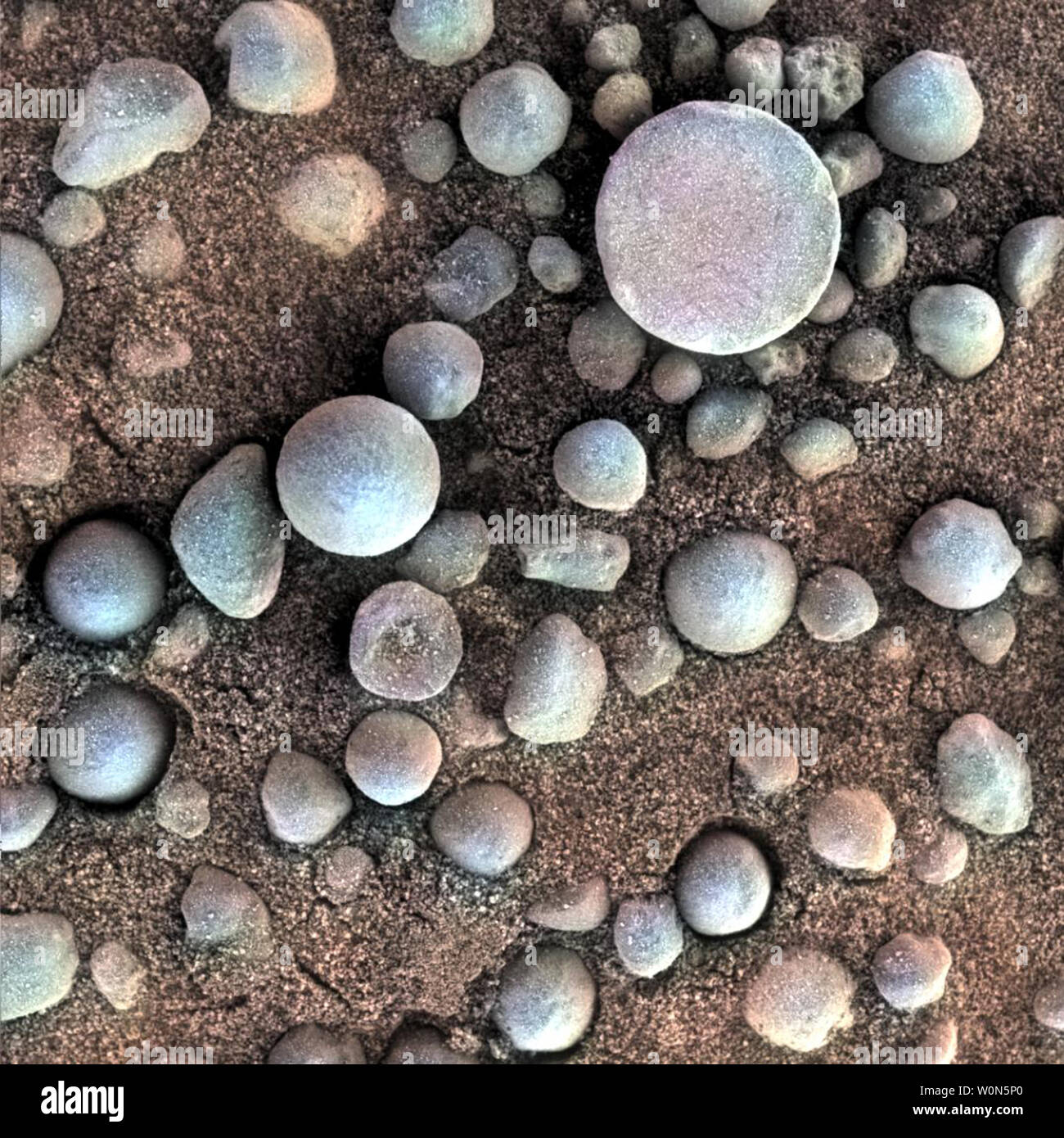The small spherules on the Martian surface in this close-up image are near Fram Crater, visited by NASA's Mars Exploration Rover Opportunity during the 84th Martian day, or sol, of the rover's work on Mars (April 19, 2004). The area shown is 1.2 inches (3 centimeters) across. These are examples of the mineral concretions nicknamed "blueberries." Opportunity's investigation of the hematite-rich concretions during the rover's three-month prime mission in early 2004 provided evidence of a watery ancient environment. NASA announced on February 13, 2019, that one of the most successful and enduring

Image details
Contributor:
UPI / Alamy Stock PhotoImage ID:
W0N5P0File size:
35 MB (1.3 MB Compressed download)Releases:
Model - no | Property - noDo I need a release?Dimensions:
3500 x 3500 px | 29.6 x 29.6 cm | 11.7 x 11.7 inches | 300dpiDate taken:
13 February 2019Photographer:
NASAMore information:
This image could have imperfections as it’s either historical or reportage.
The small spherules on the Martian surface in this close-up image are near Fram Crater, visited by NASA's Mars Exploration Rover Opportunity during the 84th Martian day, or sol, of the rover's work on Mars (April 19, 2004). The area shown is 1.2 inches (3 centimeters) across. These are examples of the mineral concretions nicknamed "blueberries." Opportunity's investigation of the hematite-rich concretions during the rover's three-month prime mission in early 2004 provided evidence of a watery ancient environment. NASA announced on February 13, 2019, that one of the most successful and enduring feats of interplanetary exploration is at an end after almost 15 years exploring the surface of Mars. The Opportunity rover stopped communicating with Earth when a severe Mars-wide dust storm blanketed its location in June 2018. NASA/UPI